Rose Quartz Description
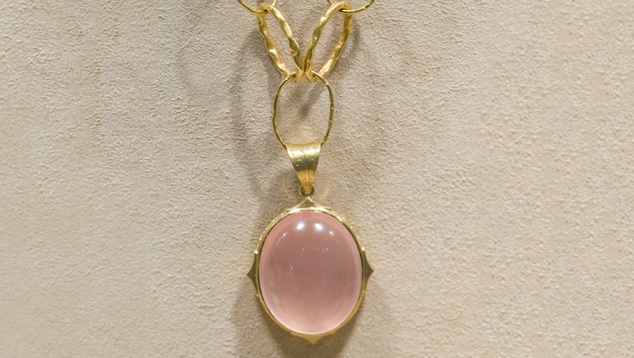
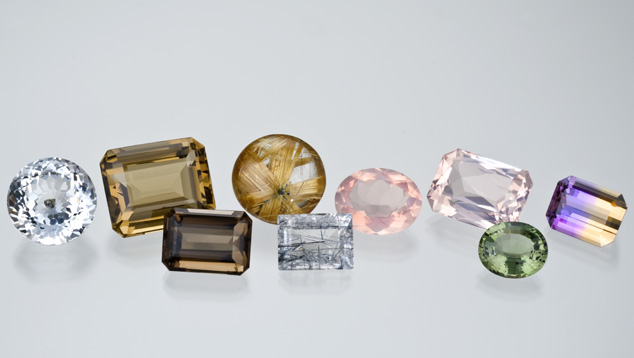
There are many attractive and well-known quartz varieties. The oval gem—fourth from the right—is rose quartz, one of the less abundant gems in the quartz family. – Robert Weldon
Rose quartz is one of the many quartz varieties used as a gem material. It gets its name from its delicate pink color, which ranges from very light (almost white) to medium-dark. The most appealing color typically occurs in larger sizes, and small rose quartz specimens with good color tend to be rare. Rose quartz is always found in massive form, so it lacks regular, flat crystal faces. It’s typically found in pegmatites, but also occurs in hydrothermal veins.Research has shown that rose quartz owes its delicate pink color to microscopic inclusions of aligned silicate mineral fibers. Advanced testing has shown that they’re generally similar—but not identical—to the mineral dumortierite. The fibers likely crystallized out as the host gem cooled, and they’re aligned according to the crystal directions of the rose quartz.
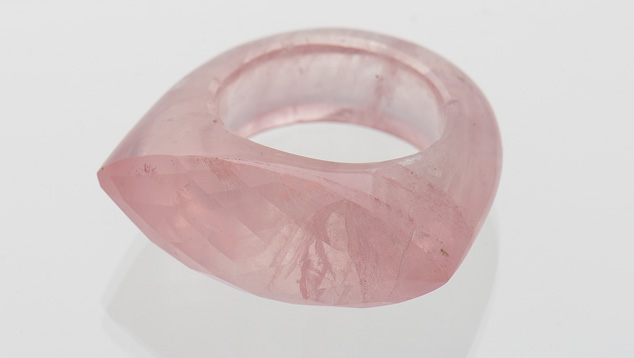
Rose quartz contains mineral inclusions that give it a soft pink color. This ring was carved from a single piece of rose quartz. - Eric Welch, courtesy Jana Miyahira-Smith
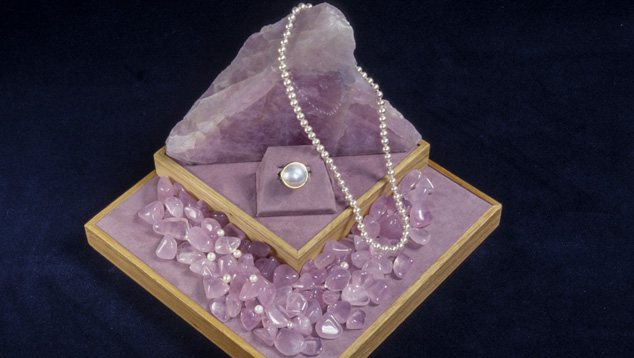
Rose quartz beads, cabochons, and rough make an enticing arrangement in a store’s display case. – Robert Weldon
This pastel gem’s inclusions give it a characteristic cloudy translucence, so it’s generally cut into beads and cabochons. Sometimes, the inclusions produce a six-rayed star if the fashioned gem is cabochon-cut and correctly oriented. Fine examples show a distinct, sharp, star floating above even pink bodycolor. The most transparent rose quartz rough might be faceted. Cutters can intensify the delicate color by applying concave facets and cutting gems in larger sizes.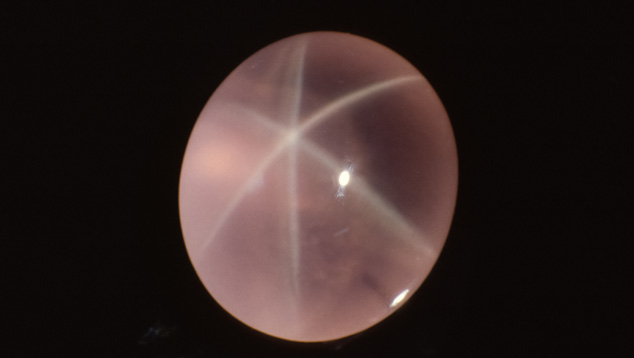
This star rose quartz is considered fine quality because of its depth of color, degree of transparency, and sharply defined star. – Robert Weldon
The delicate translucence of rose quartz inspires gem carvers to create dainty or whimsical figures. The finest-quality rose quartz rough typically comes from Brazil. Other sources include India, Madagascar, and Sri Lanka.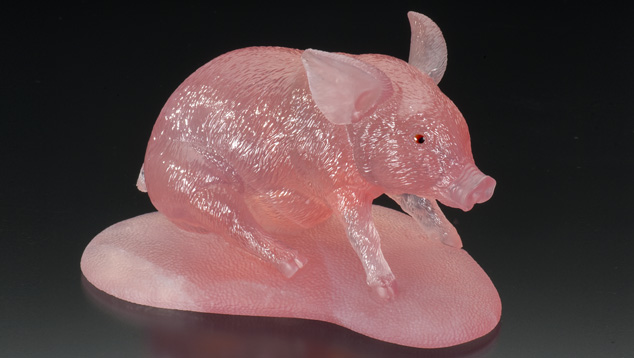
This adorable piglet was carved by Gerd Dreher from rose quartz mined in Madagascar. – Robert Weldon
Besides the typical cloudy rose quartz, which is colored by inclusions, there’s a type of transparent quartz that owes its pink color to a different mechanism. Some in the trade call it “pink crystalline quartz,” “crystalline rose quartz,” or simply “pink quartz.” Compared to massive rose quartz, it’s exceptionally rare. It might occur as beautiful clusters of transparent, well-formed crystals. The finest examples are from Brazil, especially a deposit near Galiléia, located near Governador Valadares in the state of Minas Gerais. The best are often left as mineral specimens, which can command high prices at auction. In 2013, a superb example called La Madona Rosa (the Pink Madonna) sold for $662,500. This specimen measures 15.5 x 8 inches (39 x 20 cm) and features a core of smoky quartz that resembles a human form surrounded by a glittering halo of transparent pink quartz crystals.Material from some of these deposits will fade when exposed to natural light, but its color can be restored by irradiation. Research by Russian crystal growers on synthetic pink quartz has demonstrated a color-causing mechanism, which can cause results very similar to the natural material. Growers produce pink color in transparent synthetic quartz by growing it with impurities of aluminum and phosphorous. Some of these impurities replace silicon in the quartz lattice. Subsequent irradiation produces color centers that give the crystal its pink color.
.jpg)


